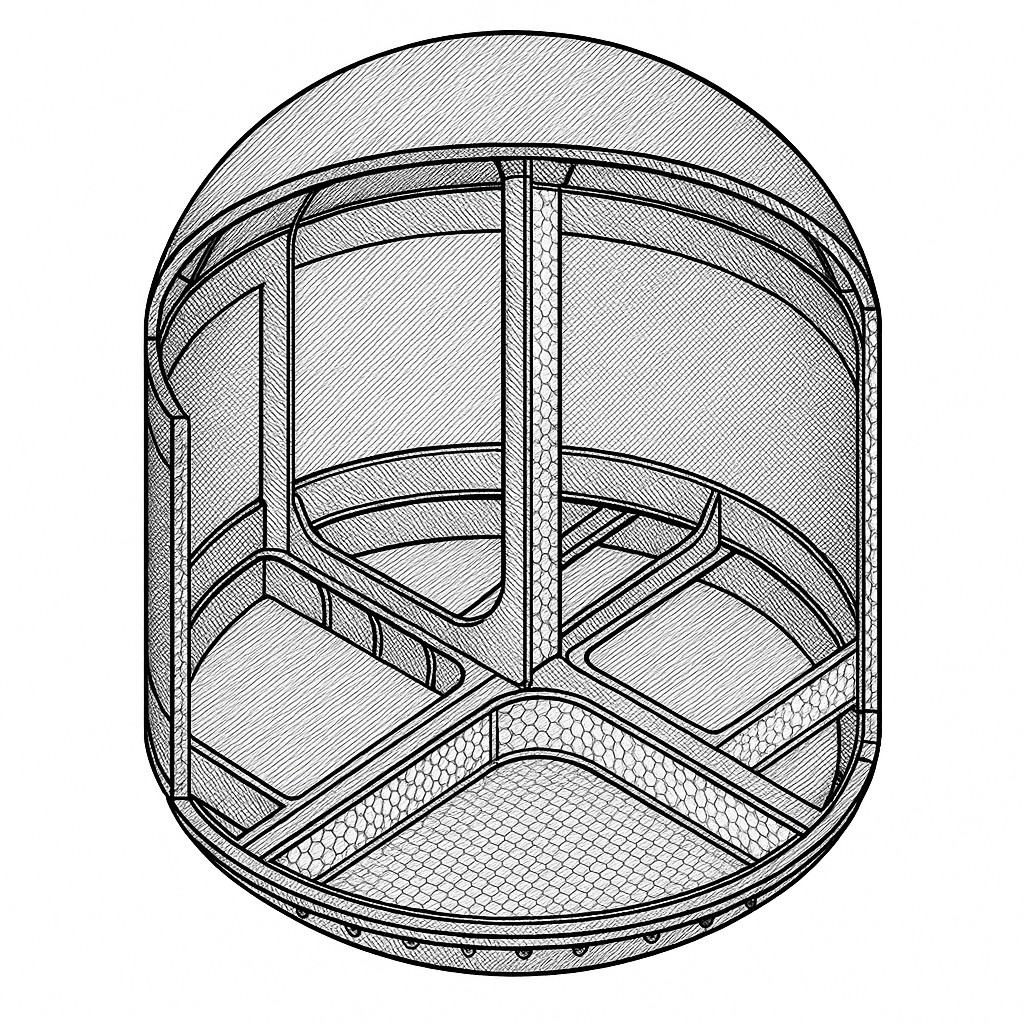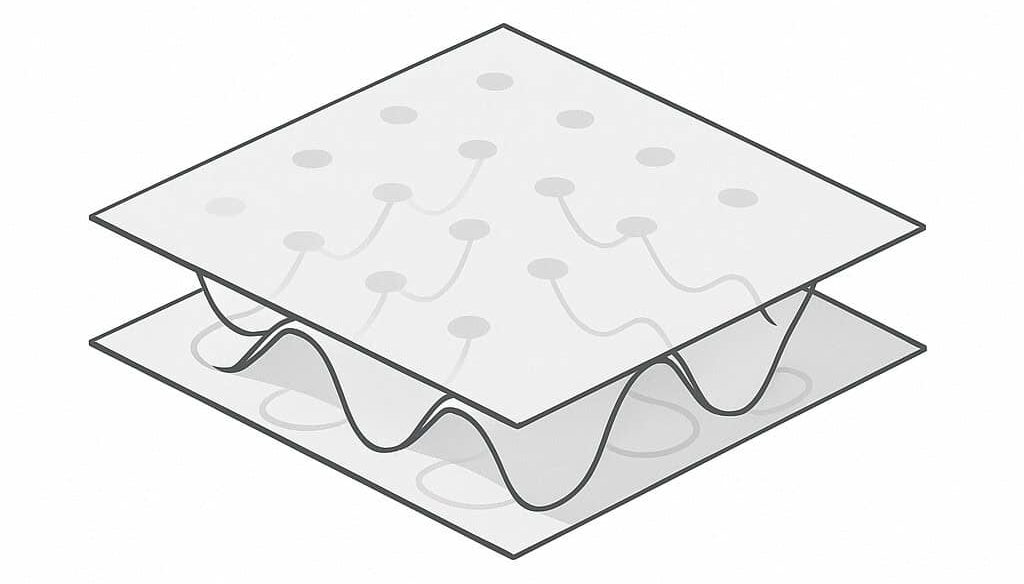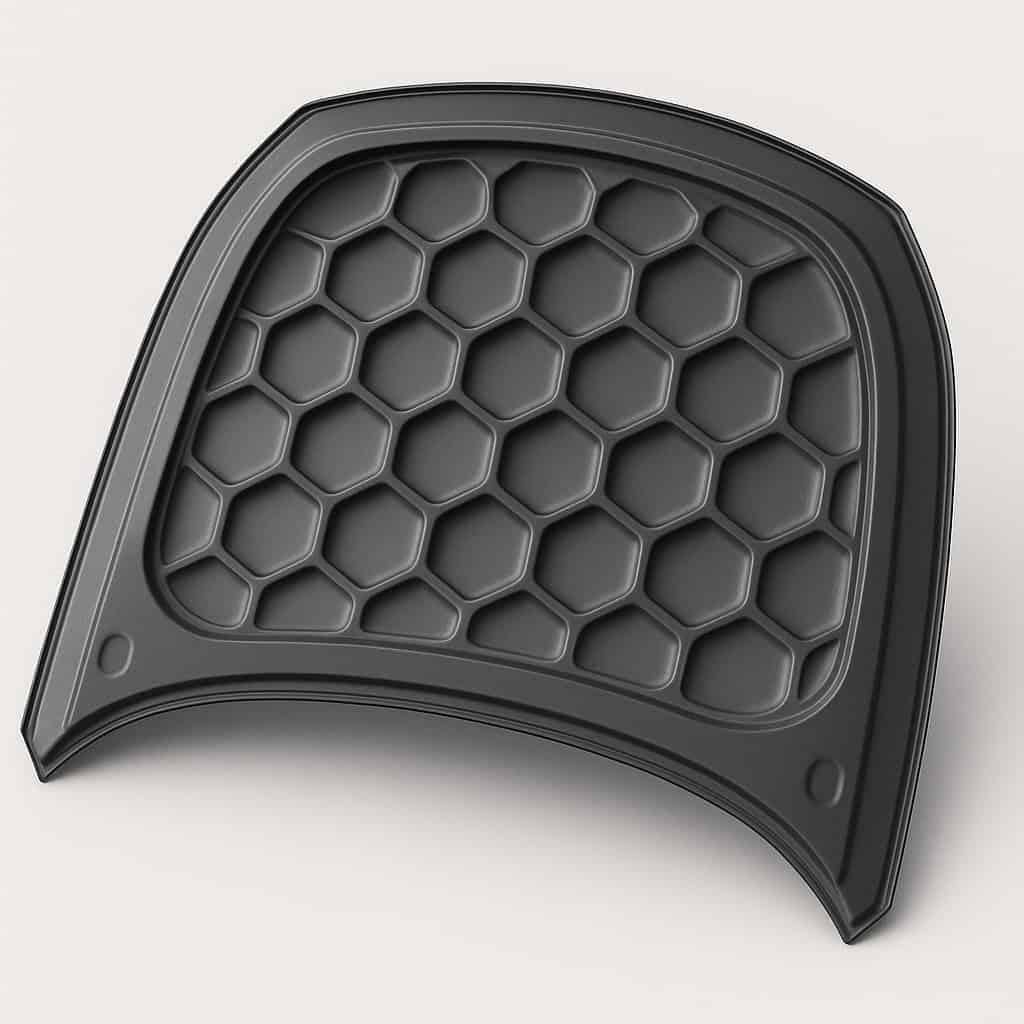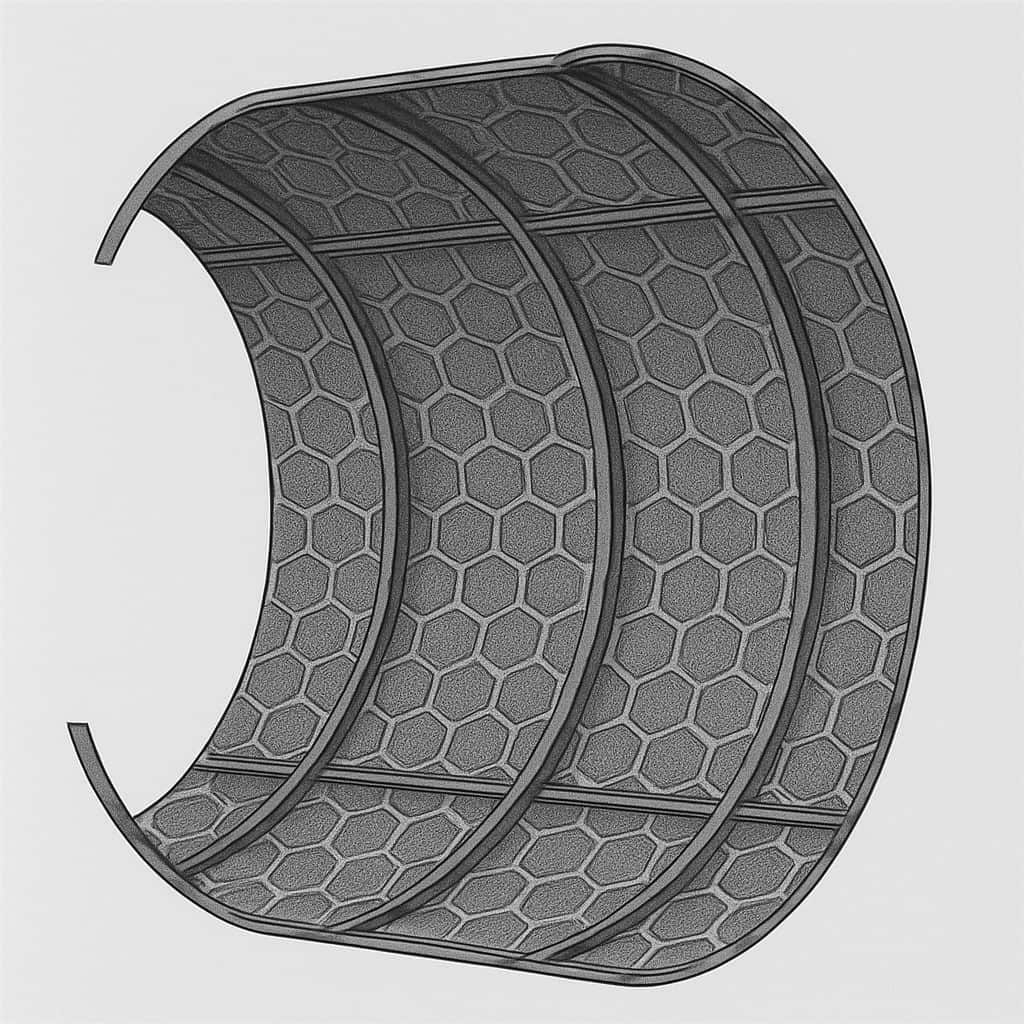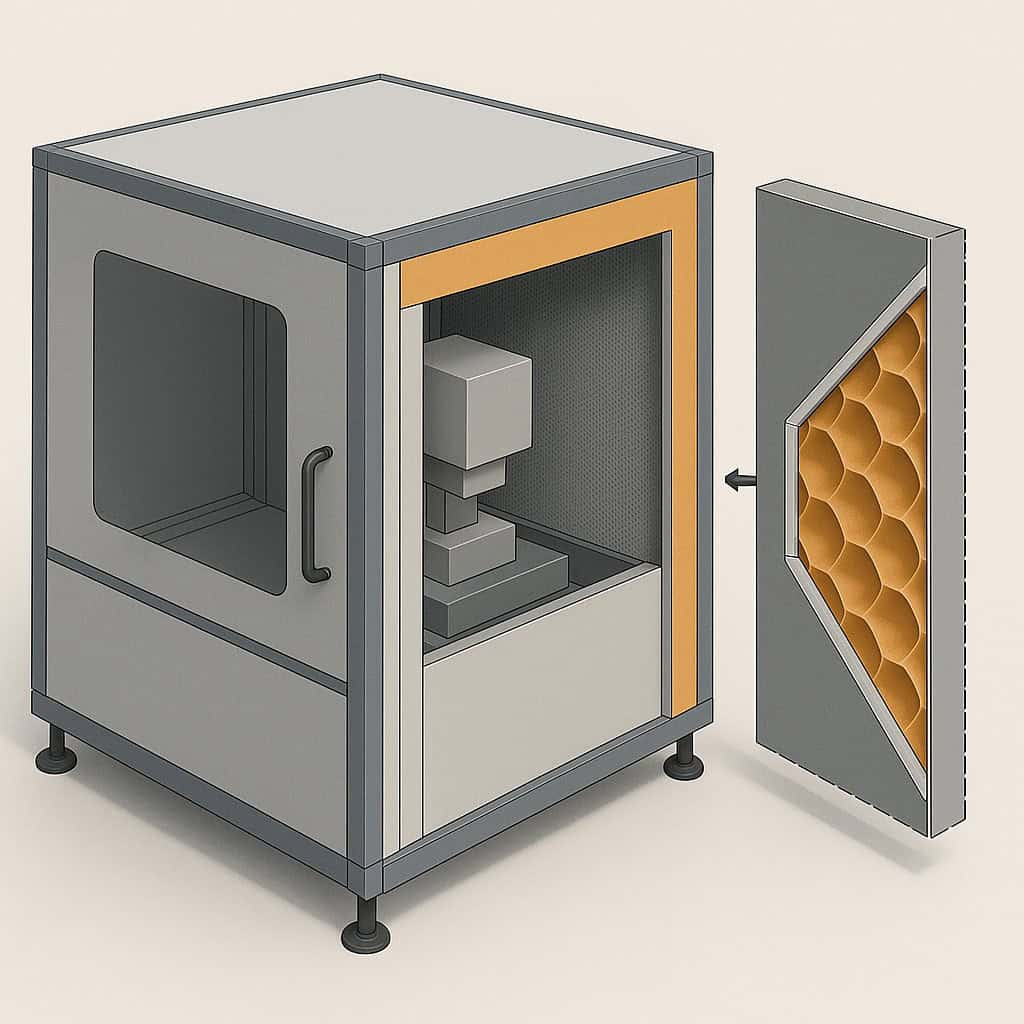Technical problem definition
Rocket hulls are subject to extreme mechanical, thermal and dynamic loads. Conventional sandwich or monocoque structures reach their limits in terms of stress distribution, impact resistance and temperature compensation. The integration of a bionic-vault-structured core structure addresses the following requirements:
- High flexural rigidity with minimal weight
- Uniform stress distribution under axial or radial load
- High vibration damping due to non-linear structural behavior
- Very good impact absorption for meteorite impacts or secondary fragments
- Compensation of temperature-induced expansions due to anisotropic material reaction
Heat shields must be able to withstand high temperatures and dynamic loads without losing their structural integrity. Conventional sheets have a low energy absorption capacity and are susceptible to local stress peaks that can lead to failure. The aim is a structure with:
- Uniform stress distribution despite high temperature stress
The main requirement is to create a load-bearing structure with an optimum balance between mass, rigidity, thermal resistance and energy absorption. Conventional honeycomb sandwich systems are limited by their punctual weakening under impact stress and delamination risks. The aim is to achieve a consistently dimensionally stable and highly integrated structure with improved long-term characteristics.
Solution
The solution lies in the use of a curved sheet metal core (e.g. DeepHEX structure) based on the principle of bionic self-structuring. This is integrated between two smooth cover layers made of CFRP or aluminum. The advantages include:
- Bending stiffness up to 7 times that of a conventional sandwich
- High isotropic rigidity despite thin-walled design
- Shock load absorption through controlled local deformation
- Minimal voltage peaks due to wide load distribution
- Reduction of thermally induced stresses due to the curved shape
This sandwich structure can be used in rocket interstage or payload fairings as well as a load-bearing segment in future lightweight upper stages.
The challenge
An effective design requires a balance between strength, dimensional stability and weight. Conventional manufacturing methods are usually material and energy intensive. Especially for applications in the aerospace, automotive and other vehicle construction sectors, a reduction in structural mass combined with increased functional integration is essential.
Result
The solution lies in the application of camber structuring according to the bionic principle. This self-organizing forming process produces structured semi-finished sheet metal products with the following properties:
- 7 times the bending stiffness of smooth sheet metal (3-point bending test)
- Isotropic stiffness in two directions
- High energy absorption under impact load (DeepHEX structure)
- Minimal local hardening → good forming reserves

